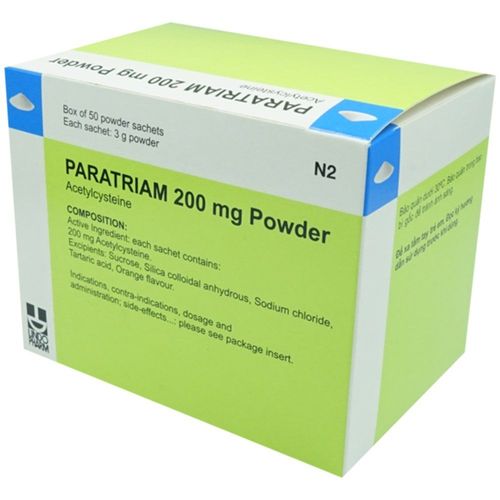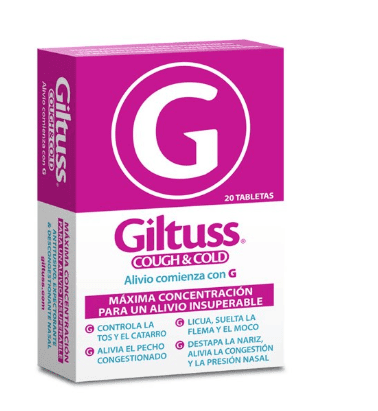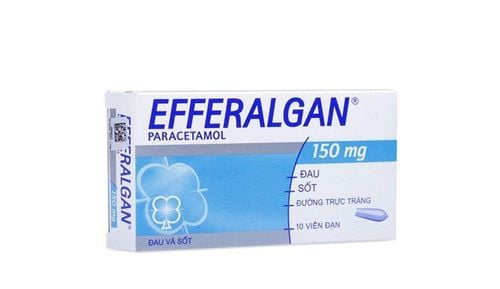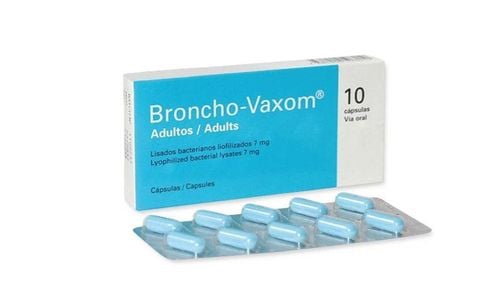This is an automatically translated article.
Stacytine 200 effervescent drug has the main ingredient is Acetylcysteine 200mg. Let's learn about the use of Stacytine in the article below.
1. Stacytine 200 effervescent drug use
Acetylcysteine in the drug is a derivative of the natural amino acid L-cystine. Acetylcysteine reduces the viscosity of lung secretions by breaking the disulfide bridges in mucoproteins and facilitating their expulsion through the cough reflex. Acetylcysteine also has a hepatoprotective effect in paracetamol overdose.
Stacytine 200 effervescent drug is indicated in the treatment of:
Mucolytic disease in abnormal mucus secretion, diseases with mucous phlegm such as acute and chronic bronchitis. Detoxification from paracetamol overdose. Stacytine is contraindicated in the following cases:
People with hypersensitivity to acetylcysteine or any component of the drug. Patients with asthma or a history of bronchospasm. Children under 2 years old.
2. Dosage and how to use Stacytine 200 effervescent drug
Stacytine effervescent drug is taken orally in a water-soluble form. Stacytine 200 dosage is adjusted based on age and purpose of disease treatment. Specifically:
Dosage for the purpose of mucus removal:
Children from 2 to 6 years old: 200 mg x 2 times/day. Adults: 200 mg x 3 times/day or 600 mg x 1 time/day. Antidote for paracetamol overdose: The initial dose is 140 mg/kg, followed by a dose of 70 mg/kg every 4 hours and a total of 17 times.
3. Be careful when taking Stacytine
When the use of Stacytine in the treatment of paracetamol overdose may induce vomiting or worsen vomiting, patients at risk of gastric bleeding should be weighed against the risk of gastric bleeding and the hepatotoxic consequences of paracetamol. Patients with asthma when taking Stacytine must be closely monitored during treatment, if bronchospasm occurs, bronchodilators must be used. If bronchospasm persists, acetylcysteine must be discontinued immediately. Stacytine use can increase thin sputum in the bronchi. If the patient has a reduced ability to cough, must aspirate sputum by mechanical means or put a suction tube in the trachea to open the patient's airway. Hepatic Impairment: The clearance of acetylcysteine is significantly reduced in patients with cirrhosis and the half-life is twice that of healthy subjects. Pregnancy: Treatment of paracetamol overdose with Stacytine in pregnant women is effective and safe, and prevents maternal and fetal hepatotoxicity. Lactation: Stacytine is safe to use while breastfeeding. Effects on ability to drive and use machines: The effect of Stacytine on the ability to drive and use machines is unknown.
4. Undesirable effects of the drug Stacytine
Some side effects of Stacytine drugs such as: Hypersensitivity reactions with symptoms such as bronchospasm, peripheral edema, pruritus, hypotension or sometimes hypertension.Other undesirable effects may be encountered such as: flushing, nausea, vomiting, sweating, fever, syncope, joint pain, blurred vision, acidosis, convulsions, liver dysfunction, respiratory arrest or cardiac arrest.
5. Drug interactions
Acetylcysteine is incompatible with oxidizing agents. Do not use concurrently with other cough medicines or any drugs that reduce bronchial secretion during treatment with Stacytine.
Please dial HOTLINE for more information or register for an appointment HERE. Download MyVinmec app to make appointments faster and to manage your bookings easily.













